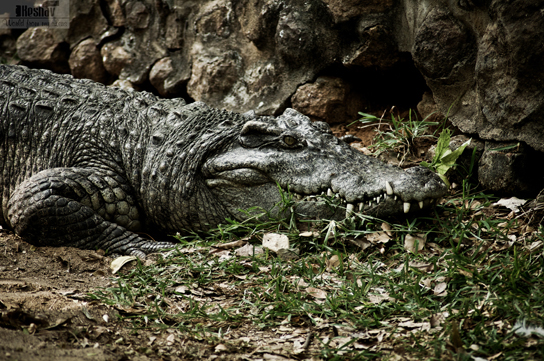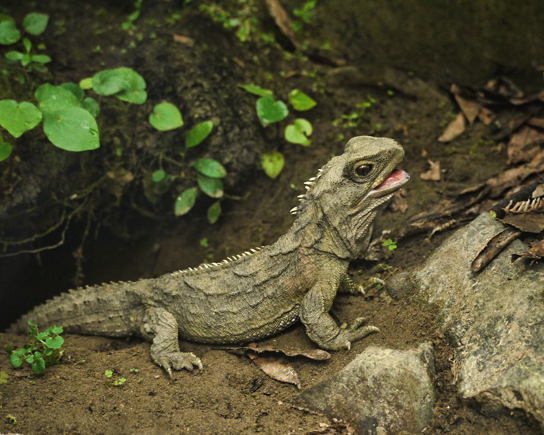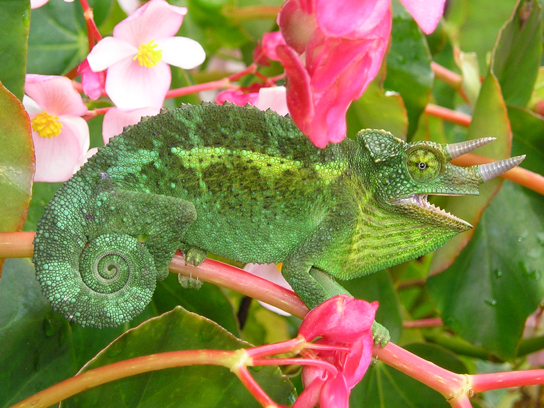| << Chapter < Page | Chapter >> Page > |
Visit this site to see a video discussing the hypothesis that an asteroid caused the Cretaceous-Triassic (KT) extinction.
Class Reptilia includes many diverse species that are classified into four living clades. These are the 25 species of Crocodilia, 2 species of Sphenodontia, approximately 9,200 Squamata species, and the Testudines, with about 325 species.
The Crocodilia (“small lizard”) arose approximately 84 million years ago, and living species include alligators, crocodiles, and caimans. Crocodilians ( [link] ) live throughout the tropics and subtropics of Africa, South America, Southern Florida, Asia, and Australia. They are found in freshwater, saltwater, and brackish habitats, such as rivers and lakes, and spend most of their time in water. Some species are able to move on land due to their semi-erect posture.

Sphenodontia (“wedge tooth”) arose in the Mesozoic era and includes only one living genus, Tuatara , comprising two species that are found in New Zealand ( [link] ). Tuataras measure up to 80 centimeters and weigh about 1 kilogram. Although quite lizard-like in gross appearance, several unique features of the skull and jaws clearly define them and distinguish the group from the squamates.

Squamata (“scaly”) arose in the late Permian, and extant species include lizards and snakes. Both are found on all continents except Antarctica. Squamata is the largest extant clade of reptiles ( [link] ). Most lizards differ from snakes by having four limbs, although these have been variously lost or significantly reduced in at least 60 lineages. Snakes lack eyelids and external ears, which are present in lizards. Lizard species range in size from chameleons and geckos, which are a few centimeters in length, to the Komodo dragon, which is about 3 meters in length. Most lizards are carnivorous, but some large species, such as iguanas, are herbivores.

Snakes are thought to have descended from either burrowing lizards or aquatic lizards over 100 million years ago ( [link] ). Snakes comprise about 3,000 species and are found on every continent except Antarctica. They range in size from 10 centimeter-long thread snakes to 10 meter-long pythons and anacondas. All snakes are carnivorous and eat small animals, birds, eggs, fish, and insects. The snake body form is so specialized that, in its general morphology, a “snake is a snake.” Their specializations all point to snakes having evolved to feed on relatively large prey (even though some current species have reversed this trend). Although variations exist, most snakes have a skull that is very flexible, involving eight rotational joints. They also differ from other squamates by having mandibles (lower jaws) without either bony or ligamentous attachment anteriorly. Having this connection via skin and muscle allows for great expansion of the gape and independent motion of the two sides—both advantages in swallowing big items.

Notification Switch
Would you like to follow the 'Bi 101 for lbcc ilearn campus' conversation and receive update notifications?